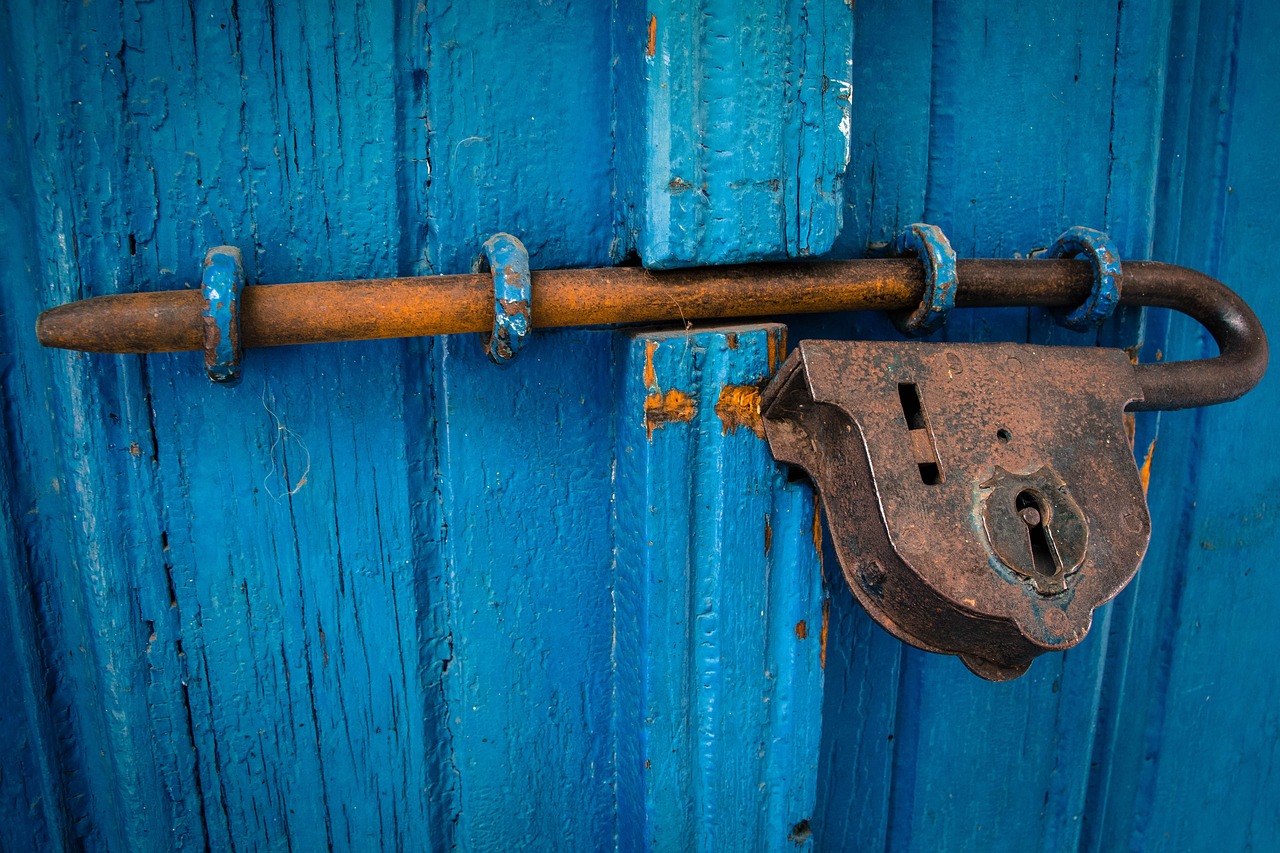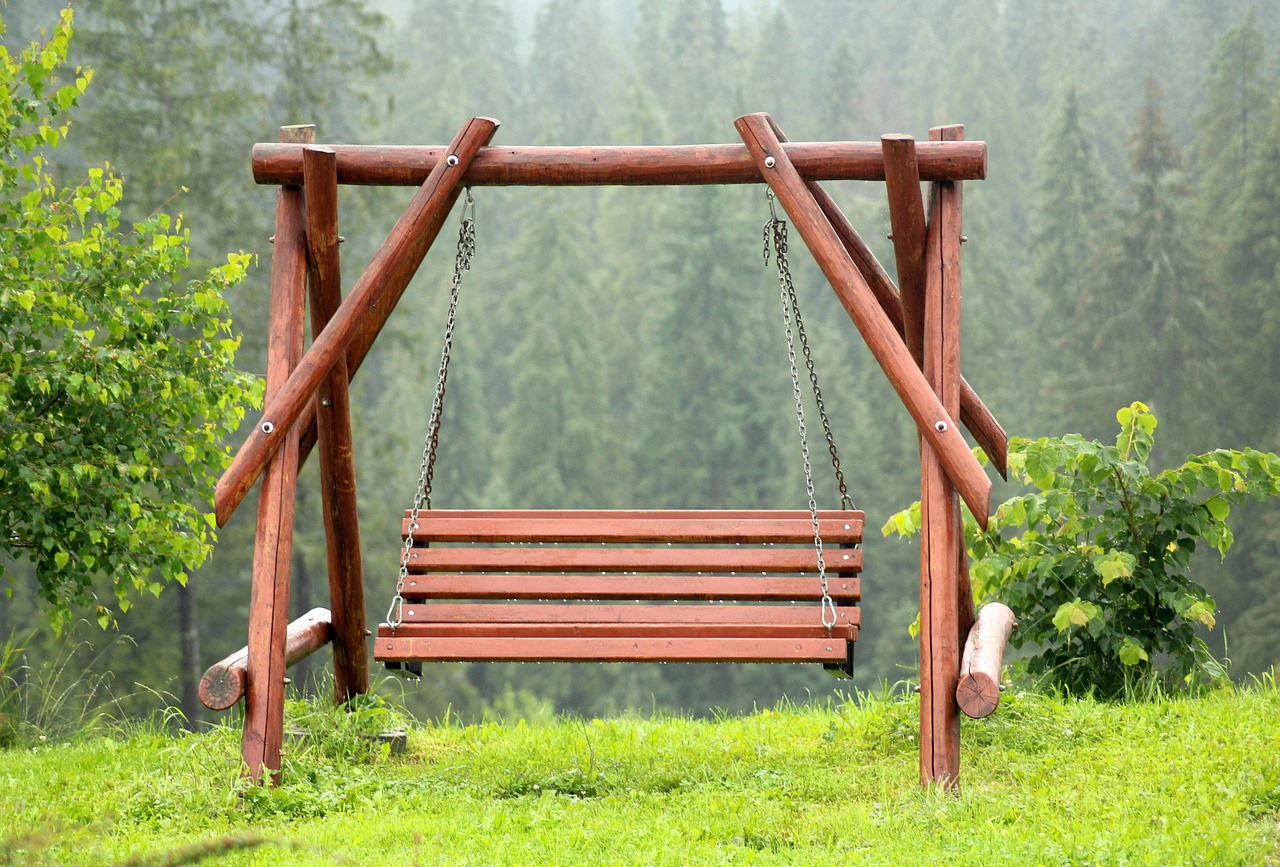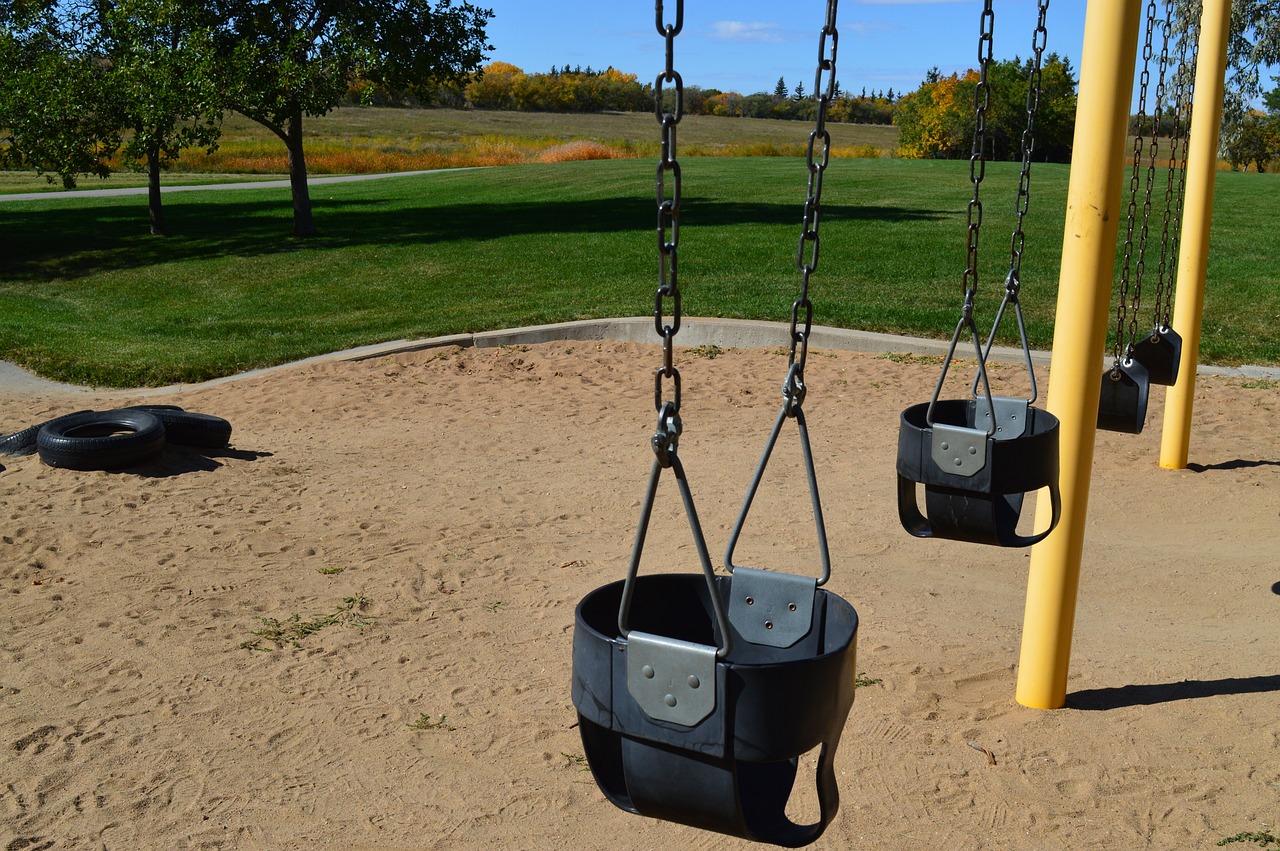A Guide to Assembling a Wooden Swing Set
This article provides a comprehensive overview of the steps, tools, and considerations necessary for successfully assembling a wooden swing set for your backyard enjoyment. Imagine the joy on your children's faces as they swing back and forth, their laughter filling the air. Building a wooden swing set isn't just a project; it’s an opportunity to create lasting memories and a safe space for fun. Whether you're a seasoned DIY enthusiast or a first-time builder, this guide will walk you through every step, making the process as smooth as possible. So, roll up your sleeves, and let’s dive into the world of swing set assembly!
Selecting the ideal spot for your swing set is crucial for safety and enjoyment. Think of it as laying the groundwork for countless hours of fun! When choosing a location, consider the following factors:
- Ground Level: Ensure the ground is level to prevent tipping and ensure stability.
- Shade: Look for a shady spot to protect your kids from the sun while they play.
- Proximity: Keep the swing set away from fences, trees, and other play areas to minimize the risk of accidents.
By taking these aspects into account, you can create a safe and enjoyable environment for your children to play in.
Before starting assembly, ensure you have all the required tools on hand. Having the right tools will not only make your job easier but also ensure that the assembly process goes as smoothly as a gentle breeze on a sunny day. Common tools you'll need include:
- Drill: For making holes and securing screws.
- Level: To ensure everything is perfectly aligned.
- Measuring Tape: For accurate measurements.
- Wrenches: To tighten bolts securely.
Gathering these tools in advance will save you time and frustration, allowing you to focus on building rather than searching for equipment.
Carefully reading the assembly instructions is vital for a successful build. Think of the instructions as your roadmap; without it, you could easily get lost! Familiarize yourself with each step and gather all parts to avoid confusion during the assembly process. It’s also a good idea to lay out all the pieces in a well-lit area. This way, you can quickly identify what you need as you go along. Remember, patience is key—rushing can lead to mistakes that might compromise safety.
Proper ground preparation is essential for stability and safety. Clear the area of debris, level the ground, and consider adding a protective surface like mulch or rubber mats for added safety. Think of this step as laying the foundation of a house; if the base isn’t solid, everything built on top can be shaky. A well-prepared ground not only enhances safety but also improves the overall aesthetics of your backyard.
The frame serves as the foundation of your swing set. Follow the instructions closely to assemble the main structure, ensuring all connections are secure and properly aligned to guarantee stability. This is where the magic happens! As you put the pieces together, envision the laughter and joy that will soon fill the air. Take your time here; a sturdy frame is crucial for the safety of the little ones who will be swinging high in the sky!
Attaching the swing seats requires precision and care. Ensure that swings are hung at the correct height and distance apart to provide a safe and enjoyable experience for children. A common mistake is to hang swings too close together, which can lead to collisions. Aim for a distance of about 24 inches between swings to give kids enough space to swing freely. Remember, safety first!
Incorporating safety features is critical for preventing accidents. Consider adding safety straps, guardrails, or soft landing surfaces to enhance the safety of your swing set. These features act as a safety net, giving you peace of mind while your children play. You might also want to install a rubber mat underneath the swing area to cushion any falls. It’s all about creating a secure environment where kids can have fun without worry.
Regular maintenance is key to prolonging the life of your swing set. Just like a car needs regular oil changes, your swing set requires periodic checks. Inspect it periodically for wear and tear, tighten loose bolts, and apply protective finishes to the wood to prevent deterioration. A little upkeep goes a long way in ensuring that your swing set remains a safe haven for your kids for years to come.
Teaching children about safe play practices is essential. Set rules for using the swing set, supervise playtime, and encourage sharing to foster a safe and enjoyable environment for all. Kids thrive in structured environments, and having clear guidelines helps them understand how to play safely. It’s your job to instill these practices while they enjoy their time swinging and soaring through the air!
Here are some common questions that might pop up during your swing set assembly journey:
- How long does it take to assemble a swing set? Depending on your experience and the complexity of the swing set, it can take anywhere from a few hours to a full day.
- What type of wood is best for a swing set? Cedar and redwood are popular choices due to their natural resistance to rot and insects.
- How can I ensure my swing set is safe? Regularly inspect for loose bolts, check for splinters, and ensure the area around the swing set is clear of hazards.

Choosing the Right Location
When it comes to assembling a wooden swing set, the first step is all about location, location, location! Just like real estate, the spot you choose can make or break the fun and safety of the swing set. Imagine your kids swinging joyfully, but then, whoops! They’re too close to a tree or a fence. Not ideal, right? So, let’s dive into the key factors that will help you pick the perfect spot.
First off, consider the ground level. You want a flat area that can support the weight of the swing set and the energetic kiddos who will be using it. Uneven ground can lead to instability, which could spell disaster during playtime. If the ground is sloped, you might need to do some leveling work, which can be a bit of a hassle but definitely worth the effort for safety reasons.
Next up, think about shade. Kids love to play outside, but too much sun can lead to sunburns and overheating. Look for a location that provides some natural shade from trees or nearby structures. However, be cautious of trees that have low-hanging branches or roots that could pose a risk. You want the swing set to be a fun oasis, not a sun-baked playground!
Also, consider the proximity to other play areas. If you have a sandbox, slide, or other play equipment, it’s wise to keep them within sight but not too close. This way, your kids can easily transition from one activity to another without feeling cramped. Plus, it allows you to supervise them more effectively. A good rule of thumb is to maintain at least 6 feet of distance between the swing set and any other structures or play equipment.
Finally, take a moment to survey the surrounding environment. Look out for hazards such as sharp rocks, thorny bushes, or even a busy street nearby. You want to create a safe zone where your kids can laugh and play without worrying about unexpected dangers. If necessary, you can even create a small barrier with landscaping or fencing to keep your play area secure.
In summary, choosing the right location for your swing set involves a bit of planning and foresight. By paying attention to ground level, shade, proximity to other play areas, and potential hazards, you can create a safe and enjoyable environment for your children to swing into adventures. Remember, the right spot not only enhances playtime but also gives you peace of mind as a parent!

Gathering Necessary Tools
Before you dive into the exciting world of assembling your wooden swing set, it's crucial to gather all the necessary tools. Imagine trying to bake a cake without the right utensils—frustrating, right? The same principle applies here. Having the right tools on hand not only makes the process smoother but also saves you from unnecessary headaches down the road.
To ensure a seamless assembly experience, here’s a list of essential tools you’ll need:
- Drill: A power drill is indispensable for making holes and driving screws. Make sure it’s charged and ready to go!
- Level: A level tool will help you ensure that your swing set is perfectly balanced, which is vital for safety.
- Measuring Tape: Accurate measurements are key. A measuring tape will help you get the dimensions right and avoid any miscalculations.
- Wrenches: These are essential for tightening bolts and ensuring everything is securely fastened.
- Hammer: A good hammer will come in handy for driving in stakes or securing parts that require a little extra persuasion.
- Safety Gear: Don’t forget your gloves and safety goggles! Protecting yourself while you work is just as important as assembling the swing set itself.
Now, you might be wondering, "Isn't it just a swing set? How complicated can it be?" Well, while the assembly might seem straightforward, the details matter. Each tool plays a vital role in ensuring that your swing set is not only functional but also safe for your little ones. For instance, using a level will prevent that dreaded wobble that can lead to accidents during playtime.
In addition to the tools mentioned, it’s also wise to have some extra screws and bolts on hand. Sometimes, parts can get lost or damaged during the assembly process, and having spares can save you a trip to the hardware store. Think of it as a safety net—better to have it and not need it than to need it and not have it!
Lastly, consider organizing your tools in a way that makes them easily accessible. A tool belt or a sturdy toolbox can keep everything in one place, so you won’t waste time searching for that elusive wrench when you need it most. Just like a chef organizes their kitchen, a well-organized workspace will help you work more efficiently and effectively.
So, gear up, gather those tools, and get ready for a fun-filled day of assembling your swing set! Remember, preparation is half the battle, and with the right tools at your side, you’ll be swinging into action in no time.

Understanding the Assembly Instructions
When it comes to assembling your wooden swing set, is your golden ticket to a smooth and successful build. Think of the instructions as your roadmap; they guide you through each twist and turn, ensuring you don’t end up lost in a sea of bolts and beams. Before you dive into the assembly process, take a moment to familiarize yourself with the entire manual. This way, you can visualize the final product and grasp how each component fits into the bigger picture.
Start by laying out all the parts in an organized manner. This not only helps you see what you have but also makes it easier to locate each piece as you go along. A good tip is to group similar items together. For example, keep all the swing seats in one area, the frame pieces in another, and the hardware—like bolts and screws—neatly sorted. This can save you a lot of time and frustration later on.
Next, pay close attention to the diagrams included in the instructions. They are there for a reason! A picture is worth a thousand words, and in this case, it can save you from making costly mistakes. Look for key details such as the orientation of each piece and the specific order of assembly. If a diagram shows a particular component in a certain position, make sure you follow it precisely. Misalignment can lead to instability and safety issues down the road.
As you read through the instructions, you might encounter terms or jargon that are unfamiliar. Don’t hesitate to look them up! Understanding the terminology will give you a clearer picture of what’s expected. If the instructions mention a “cross brace,” for instance, you’ll want to know exactly what that looks like and where it fits into the assembly.
Moreover, it’s essential to check for any specific tools required for each step. Some components may need a particular tool that isn’t commonly used for other parts. By being prepared with the right tools, you can avoid unnecessary interruptions and keep the assembly process flowing smoothly.
Finally, don’t rush! It’s tempting to speed through the assembly, especially when you’re excited to see the finished product. However, taking your time to follow each step carefully will ensure that everything is done correctly. If you find yourself feeling overwhelmed, take a break. A clear mind will lead to better decisions and a safer swing set.
In summary, understanding the assembly instructions is not just about reading; it's about engaging with the material, organizing your workspace, and taking your time to ensure every piece fits perfectly. With a little patience and attention to detail, you’ll be well on your way to creating a fun and safe play area for your children!

Preparing the Ground
When it comes to assembling a wooden swing set, is one of the most critical steps you can take to ensure safety and stability. Think of the ground as the foundation of a house; without a solid base, everything can come tumbling down. To kick things off, start by choosing a level area in your backyard that is free from any obstructions like rocks, tree roots, or sharp objects. This not only provides a safe play environment but also makes the assembly process much easier.
After selecting your spot, it’s time to get your hands dirty. Begin by clearing the area of any debris, leaves, or grass. You want a clean slate. Once cleared, use a shovel and a rake to level the ground. This might seem tedious, but trust me, it’s worth the effort. Uneven ground can lead to instability, which can be a hazard during playtime. If you discover that your yard has a slope, consider leveling it out or finding a different location that is more suitable.
Next, consider adding a protective surface to cushion any falls. This is especially important for younger children who might take a tumble while swinging or climbing. You have a few options for this:
- Mulch: A natural option that is soft and easy to maintain.
- Rubber Mats: These provide excellent shock absorption and are durable.
- Sand: While it can be fun to play in, it requires regular maintenance to keep it clean.
Whichever option you choose, aim for a depth of at least 6 inches to ensure adequate cushioning. Once your protective surface is laid down, you’ll want to mark the area where your swing set will be placed. Using stakes and string can help outline the dimensions, ensuring you have a clear visual of how much space you’ll need.
Lastly, take a moment to double-check your work. Use a level to ensure the ground is even and that your protective surface is spread out evenly. Remember, this is the base where countless memories will be made, so take pride in your preparation. By investing this time upfront, you’re setting the stage for a safe and fun playground for your kids.
Here are some common questions that might come up during the ground preparation phase:
| Question | Answer |
|---|---|
| How deep should the protective surface be? | It should be at least 6 inches deep to provide adequate cushioning. |
| Can I set up the swing set on grass? | While it’s possible, it’s better to clear the grass and add a protective surface for safety. |
| What if my yard is sloped? | Consider leveling the area or finding a different, flatter location for your swing set. |

Assembling the Frame
Assembling the frame of your wooden swing set is like laying the foundation for a house; it’s the critical step that ensures everything else stands strong and secure. The frame is not just a collection of wooden pieces; it’s the backbone of your swing set, supporting all the fun and laughter that will happen on it. To get started, gather your materials and tools, and make sure you have a clear workspace. You wouldn’t want to trip over stray pieces while you’re trying to build something fantastic, right?
Begin by laying out all the parts according to the assembly instructions. This step is crucial because it allows you to visualize how everything fits together, much like piecing together a puzzle. Look for the main beams and vertical posts; these are your heavy hitters in terms of support. Make sure to check for any damage or defects in the wood before you start assembling. Trust me, you don’t want to find out a piece is splintered or cracked halfway through the process!
Next, follow the instructions carefully to connect the main beams to the vertical posts. It’s essential to use the right screws and hardware provided in the kit. If you’re unsure, double-check the instruction manual. A little confusion at this stage can lead to bigger headaches later on. When securing the pieces, use a level to ensure that everything is aligned properly. An unlevel swing set can lead to uneven swings, which is not only frustrating but can also pose a safety risk.
Once you have the main structure assembled, it’s time to add cross braces. These are like the safety nets of your frame, providing extra stability and preventing any wobbling. Attach them diagonally between the vertical posts and the main beams. Not only does this enhance the sturdiness, but it also gives your swing set a professional look. Remember, a well-assembled frame is the key to a long-lasting swing set, so take your time to ensure every connection is tight and secure.
After the frame is fully assembled, it’s a good idea to step back and admire your work. Take a moment to check that everything is straight and secure. If you notice any loose bolts or misalignments, now is the time to fix them before moving on to the next steps. A solid frame will not only support the swings but also provide a safe environment for your children to play. So, are you ready to swing into action?
- How long does it take to assemble the frame? The time can vary, but generally, it takes about 2-4 hours depending on your experience and the complexity of the swing set.
- Do I need a helper for assembly? While it’s possible to assemble the frame alone, having a friend or family member can make the process easier and more enjoyable.
- What if I notice a piece is damaged? If you find a damaged piece, contact the manufacturer for a replacement. It’s important to ensure that all parts are in good condition for safety.

Installing Swing Seats
When it comes to , precision and attention to detail are your best friends. The joy of watching your children swing back and forth is immeasurable, but ensuring their safety while they do so is paramount. First off, you’ll want to determine the appropriate height for the swings. A good rule of thumb is to hang the swings so that they are about 18 inches off the ground when at rest. This height allows for plenty of swinging action while minimizing the risk of a hard landing.
Next, consider the spacing between the swings. Ideally, swings should be spaced about 24 to 30 inches apart to prevent collisions during play. This spacing not only enhances safety but also allows for a more enjoyable swinging experience. To ensure that you get it right, you can use a measuring tape to mark the spots where the swings will be attached. This step is crucial, as even a small mistake in measurement can lead to a less-than-ideal swinging experience.
Once you have your measurements down, it’s time to attach the swing seats. Most swing sets come with pre-drilled holes for easy installation. If yours doesn’t, you may need to drill holes into the swing frame. Make sure to use a drill bit that matches the size of your swing's hanging hardware. As you attach the swings, always double-check that the hardware is secure. You wouldn’t want a swing seat to come loose mid-swing!
| Step | Description |
|---|---|
| 1 | Measure the height for swing seats (18 inches off the ground). |
| 2 | Space swings 24-30 inches apart to prevent collisions. |
| 3 | Attach swing seats using secure hardware. |
| 4 | Double-check all connections for security. |
As you hang each swing, make sure to use a level to confirm that they are even. An uneven swing can lead to an uncomfortable and unsafe experience. If you’re using chains, ensure they are of equal length on both sides of the swing seat to maintain balance. Once everything is in place, give each swing a gentle push to test their stability and make adjustments as necessary.
Finally, don’t forget to periodically check the swings for wear and tear. Over time, chains can rust, and seats can wear out. Regular inspections will help keep your swing set safe and enjoyable for years to come. Remember, the goal is to create a fun and safe space for your kids to play, so take your time during this installation process!

Adding Safety Features
When it comes to creating a backyard oasis, safety should always be at the forefront of your mind, especially when it involves children playing on a swing set. Incorporating safety features is not just a good idea; it's essential for ensuring that your little ones can enjoy their playtime without unnecessary risks. Think of your swing set as a fortress of fun, and just like any fortress, it needs strong walls and secure gates to keep its inhabitants safe.
One of the first things to consider is the installation of guardrails. These are particularly important if your swing set has a fort or a slide component. Guardrails act as a protective barrier, preventing children from accidentally falling off while playing. They should be sturdy and high enough to provide adequate protection without restricting access to the fun. The height of the guardrails should ideally be at least 24 inches above the platform to ensure maximum safety.
Another crucial feature is the addition of safety straps for swings. These straps can help secure the swing seats to the frame, minimizing the risk of the swings detaching during play. It's a simple yet effective way to add an extra layer of security. When installing swings, ensure that they are hung with enough space between them—typically about 18 inches apart—to prevent collisions during use. This spacing allows children to swing freely without the danger of bumping into each other.
Consider also the surface beneath the swing set. A soft landing surface can significantly reduce the risk of injury if a child falls. Instead of grass, which can be uneven and hard, opt for materials like mulch, rubber mats, or even sand. These materials are designed to cushion falls and provide a safer play area. For example, a depth of 12 inches of mulch can help absorb the impact of a fall, making it a fantastic choice for safety.
Finally, don’t forget about regular safety inspections. Just like a car needs regular check-ups, your swing set requires periodic maintenance to ensure that all safety features are functioning correctly. Inspect the swing seats for wear, check the integrity of the guardrails, and ensure all bolts and screws are tight. Keeping a checklist can be a great way to stay on top of these tasks. Here’s a quick maintenance checklist you might find helpful:
| Maintenance Task | Frequency |
|---|---|
| Inspect swing seats for wear | Monthly |
| Check tightness of all bolts and screws | Monthly |
| Examine guardrails for stability | Every three months |
| Replace worn-out safety straps | As needed |
| Clear debris from the play area | Weekly |
By prioritizing these safety features, you’re not only enhancing the enjoyment of your swing set but also ensuring a safe environment where children can explore, play, and create lasting memories. After all, a safe swing set is a happy swing set!
- What are the best materials for a soft landing surface?
Mulch, rubber mats, and sand are all excellent choices for cushioning falls. - How often should I check the safety features?
It's recommended to perform inspections monthly, with more thorough checks every three months. - Are safety straps necessary for all swings?
While not mandatory, safety straps provide extra security and peace of mind, especially for younger children.

Maintenance Tips
When it comes to keeping your wooden swing set in top-notch condition, regular maintenance is not just a suggestion—it's a necessity! Think of it like taking care of a car; if you ignore the little things, you might end up with a much bigger problem down the road. So, what should you be looking out for? Here are some essential maintenance tips that will help you prolong the life of your swing set and ensure it remains a safe play area for your children.
First and foremost, regular inspections are key. Make it a habit to check your swing set at least once a month. Look for any signs of wear and tear, such as cracks in the wood, rust on the metal parts, or loose bolts. If you notice anything concerning, address it immediately. For instance, if a bolt is loose, tighten it up right away to avoid any accidents. You wouldn't want a swing to come crashing down just because of a simple oversight!
Next, consider applying a protective finish to the wood. This is particularly important if your swing set is exposed to the elements. A good quality wood sealant can help prevent moisture from seeping in, which can lead to rot. Additionally, using a sealant can protect against UV rays that may cause fading and deterioration over time. It's like putting sunscreen on your swing set—keeping it safe from the harsh sun!
Another important aspect is the cleaning of the swing set. Dirt and debris can accumulate over time, making the play area less inviting and potentially hazardous. Use a mild soap and water solution to wipe down the surfaces. Make sure to focus on the swing seats and any other areas that come into contact with little hands. This not only keeps the swing set looking great but also helps to prevent any build-up of harmful bacteria.
Also, don't forget about the ground beneath the swing set. Regularly check the area for any unevenness or hazards. If you notice that the ground has shifted or become uneven, it may be necessary to level it out. You might also consider adding a protective surface, like mulch or rubber mats, which can help cushion any falls and provide a safer play environment.
Incorporating these maintenance tips into your routine will not only enhance the longevity of your swing set but also ensure that it remains a safe haven for your children to play and explore. Remember, a little effort goes a long way in keeping the fun alive!
Here are some common questions parents have when it comes to maintaining their wooden swing set:
- How often should I inspect my swing set? It's advisable to inspect your swing set at least once a month to catch any issues early.
- What type of sealant should I use? Look for a high-quality wood sealant that offers protection against moisture and UV rays.
- Can I use regular soap to clean it? Yes, a mild soap mixed with water is perfect for cleaning the surfaces of your swing set.
- How can I level the ground? You can use a shovel to fill in any low spots and create a flat, even surface.

Encouraging Safe Play
Ensuring that children enjoy their time on the swing set while remaining safe is a responsibility that every parent or guardian should take seriously. It’s not just about having fun; it’s about creating an environment where kids can explore, laugh, and play without the worry of accidents. One of the best ways to encourage safe play is by establishing clear rules that everyone understands. For instance, you might decide that only one child should swing at a time, or that pushing each other on swings is a no-go. These simple guidelines can significantly reduce the risk of injuries.
Moreover, supervision is key. Keeping an eye on the kids while they play not only helps in enforcing these rules but also allows you to step in if things get a little too wild. Think of it like being a lifeguard at a pool; your presence alone can deter risky behavior. When children know they are being watched, they are more likely to adhere to the safety guidelines you've set.
Another important aspect to consider is teaching children about sharing. When kids learn to take turns on the swing set, they not only practice patience but also reduce the chances of conflicts arising. You can introduce games that involve waiting for their turn, which can make the experience enjoyable and safe. For example, you might say, “Let’s count to ten, and then it’s your turn!” This not only keeps them engaged but also reinforces the concept of taking turns.
In addition to rules and supervision, you should regularly remind children about the importance of safe play. A good practice is to have a quick chat before they start playing. You can say something like, “Remember to be careful and wait for your turn!” This repetition helps reinforce their understanding of safety. You might even consider creating a fun poster with safety rules and hang it near the swing set as a visual reminder.
Lastly, consider establishing a designated playtime. This can help manage the number of children using the swing set at any one time, reducing overcrowding and potential accidents. You could use a simple schedule, perhaps dividing playtime into slots where different groups of kids can enjoy the swing set. This way, everyone gets a fair chance to play, and it fosters a sense of community among the children.
In summary, encouraging safe play on a wooden swing set involves a combination of setting rules, supervising playtime, teaching the importance of sharing, reminding children of safety practices, and managing playtime effectively. By implementing these strategies, you can ensure that your backyard becomes a haven of fun and safety for your children.
| Question | Answer |
|---|---|
| What age is appropriate for children to use a swing set? | Generally, children aged 2 and up can safely use a swing set, but always check the manufacturer's recommendations. |
| How often should I inspect the swing set for safety? | It’s best to inspect your swing set at least once a month for wear and tear, and after any severe weather conditions. |
| What materials are best for a swing set? | Wood is a popular choice for swing sets due to its durability and aesthetic appeal, but metal options are also available. |
| Are there any safety features I should add? | Consider adding safety straps, guardrails, and soft landing surfaces to enhance safety while playing. |
Frequently Asked Questions
- What is the best location for a wooden swing set?
Choosing the right location is crucial! Look for a flat, level area away from trees, fences, or other structures. Ideally, it should have some shade to keep the swings cool and safe from the sun. Think of it like picking the perfect spot for a picnic: you want it to be inviting and safe!
- What tools do I need to assemble a swing set?
You’ll want to gather a few essential tools before diving in. A drill, level, measuring tape, and wrenches are your best friends during assembly. Having everything ready is like having your favorite snacks on hand for a movie night—it makes the experience so much smoother!
- How important are the assembly instructions?
They're super important! Think of assembly instructions as your treasure map. Following them closely ensures you won’t end up with a swing set that resembles a modern art installation. Take the time to read through each step and familiarize yourself with the parts to avoid any confusion.
- Do I need to prepare the ground before setting up?
Absolutely! Proper ground preparation is like laying the foundation for a house. Clear away any debris, level the ground, and consider adding a protective surface like mulch or rubber mats. This not only enhances safety but also makes the swing set more stable and enjoyable for the kids.
- How do I ensure the swing seats are installed correctly?
Precision is key here! Make sure the swings are hung at the right height and distance apart. It’s like making sure your shoes are tied properly before running a race—safety first! Double-check everything to ensure a fun and safe swinging experience for the little ones.
- What safety features should I add to the swing set?
Incorporating safety features is a must! Think about adding safety straps, guardrails, or even soft landing surfaces. These additions are like wearing a helmet while biking—they significantly reduce the risk of accidents and keep everyone safe while they play.
- How often should I maintain my swing set?
Regular maintenance is essential to keep it in tip-top shape! Inspect the swing set periodically for any wear and tear, tighten loose bolts, and apply protective finishes to the wood. It’s like giving your car a tune-up; a little care goes a long way in prolonging its life!
- What are some tips for encouraging safe play?
Teaching kids about safe play practices is key! Set clear rules for using the swing set, supervise their playtime, and encourage sharing. Think of it as creating a fun and safe playground where everyone can enjoy themselves without worry!


















